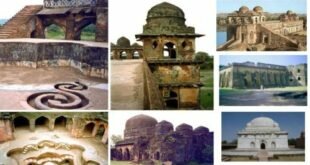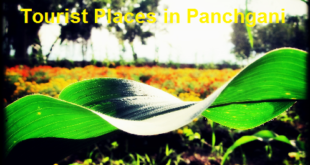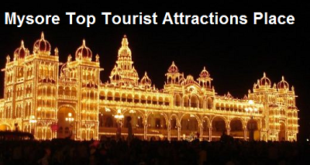Allahabad is one of the biggest cities of Uttar Pradesh, it is a city which is steeped in history and culture and counts among the oldest cities of the world. The city which was called Prayag in olden times is also home to the mythical ‘Triveni Sangam’ or the confluence of three rivers, because it is at this spot that 3 of India’s greatest and most sacred rivers, the Ganga, the Yamuna and the Saraswati meet. The city enjoyed an exalted position during the Mughal rule in India and is a tourist’s delight with its historical monuments and the rich aura of culture that permeates every nook and corner of this old city. In addition to being a tourist spot, the city also enjoys an important position in ancient Hindu texts and thus is an important pilgrimage site for devotees.

This article shall provide a low down on all the important sites in Allahabad that are a must visit for any tourist.
List of Tourist Attractions in Allahabad ( Uttar Pradesh)
- Triveni Sangam
This is arguably the single most famous spot in Allahabad and as mentioned above this marks the place where the three most sacred rivers of India meet. Another striking feature of this location is that the water of the three rivers is of a different colour and people can visibly see and differentiate between the different waters mixing at this spot. The famous Kumbh Mela, which is one of the largest of its kind in the world, also takes place on the banks of the Triveni Sangam, and attracts tourists and devotees in the millions both from within the country and from foreign lands.
- Allahabad Fort
The Allahabad Fort is a place of mixed lineage, while it was built by Ashoka the Great; it was restored and expanded in the late 16th century by the Mughal emperor Akbar. The fort is located near the Triveni Sangam and thus enjoys a steady stream of visitors on a daily basis. The fort was in its heydays a sight to behold, unrivalled in both beauty and design. The fort also has the added distinction of being the largest fort to have ever been built by the emperor Akbar, and comprises of a number of galleries and palaces including one that was used only by the women of the royal family. The Ashoka Pillar which dates back to the 3rd century BC is located inside this fort, which also encloses the tree called Akshayavat which is rumored to be immortal and in ancient times people used to give up their lives voluntarily by hanging themselves from that tree in order to gain salvation. The fort was taken over by the Britishers and is now used by the Indian Army, however a part of the fort is open for tourist.
- Khusro Bagh
Khusro Bagh is actually a beautiful Mughal garden that holds the tombs of three members of the Mughal royal family. This monument is also located quite close to the Triveni Sangam and the Allahabad Fort, and this allows tourists to visit 3 of the most important and famous places of Allahabad in one go. This place along with the Allahabad fort has been designated as sites of national importance by the Archaeological Survey of India.
The tombs in the garden belong to Emperor Jahangir’s eldest son Khusrau Mirza, his first wife and the mother of Khusrau, Shah Begum and his daughter Nithar Begum. The reasons for the deaths are bloody and tragic however with the passage of time this place has become synonymous with the peace and quiet of the gardens and the exquisite beauty of the architecture and the calligraphy that is on display in each of the tombs.
- Anand Bhavan
This building now serves as a museum related to the Nehru family and also houses the famous Jawahar planetarium, named after our first Prime Minister, which was built to actively promote astronomy and cultivate an interest in the sciences among the public. However this building is no ordinary building, it served as a residence for the Nehru family and was constructed in the 1930s by Motilal Nehru after he donated his original house to the Indian National Congress to serve as their headquarters. The present day Anand Bhavan that served as the residence for the Nehru family 1930s onwards was donated to the government in 1970 by Indira Gandhi, who was the granddaughter of Motilal Nehru and the daughter of Jawaharlal Nehru. She was also the first woman Prime Minister of India.
- All Saints Cathedral
This cathedral is also colloquially known as Pathhar Girja which literally translates to Stone Church in English and refers to the fact that stone has been used generously in building the church. The church, which was built by the British in the late 19th century, is a beautiful example of the Gothic architectural style which was prevalent in Europe in the 13th century and was designed by the same architect who was responsible for designing the magnificent Victoria Memorial in Kolkata. The church boasts of stained glass windows and stone works of remarkable craftsmanship, the likes of which is difficult to find anywhere else. The beautiful buildings of this cathedral are surrounded by an equally beautiful garden, making this a must visit on any tourist itinerary.
- Alfred Park
Another relic of the bygone British era is the famous public park called the Alfred Park. This park was built to celebrate the occasion of Prince Alfred coming to visit India and hence the name. The park spans a massive 133 acres and is understandably the largest park in Allahabad. The park has been renamed the Chandra Shekhar Azad park after the great freedom fighter who lost his life to the British in this very park.
- Allahabad Museum
The museum is located within the auspices of the Alfred Park. The Allahabad museum is an extremely important museum and is classified as a national museum, which means it is one of the few museums in the entire country that are governed directly by the Ministry of Culture. Such is the importance of these museums. Consequently the museum is a veritable treasure trove of ancient sculptures and paintings, it contains rare manuscripts and books and also important artifacts related to our struggle for freedom. Thus for anyone interested in history this museum is a mine of information and for those who have no clue about the rich culture and struggles of our country this museum is a good place to begin with.
- Allahabad University
Among the formidable list of education institutions that India boasts of, the University of Allahabad stands tall as a public university of present day India which was established way back in 1887 making it the 4th oldest university in the country. The university which is popularly called Allahabad University had by the dint of its excellence earned the nickname of ‘The Oxford of the East’. This university is a Centre of Excellence for various academic fields and has right from its inception a history of notable and famous alumni who have gone on to win international fame and renown.
- The Kumbh Mela
Rather than a place, this is actually a festival. However the Kumbh Mela is no ordinary festival, it attracts over a 100 million people from all over the world who bathe in the holy river at this auspicious time. This huge turnout makes this the largest peaceful gathering of people in the whole world. The Kumbh Mela is held in a total of four places in India and the Mela takes place at any given place once every 12 years. The Triveni Sangam in Allahabad is one of those 4 places and is the go to place for every devotee whenever the Kumbh Mela takes place there. However the fair is not only a place of religion, it is replete with stalls selling food, toys and trinkets etc. in ancient times merchants travelled all the way from the Middle East to attend what was and probably is the greatest fair on Earth. Thus the Kumbh Mela is not confined to any religion or caste, and people from all walks of life visit this fair to take in this unique experience.
- Mayo Memorial Hall
Another fine example of British architecture, this was intended to be a meeting place during the British era. The hall consists of a tower which is 180 feet long and the entire structure is decorated with designs and motifs created by the British architects. The place was built in memory of the slain British Viceroy Mayo who was assassinated, and it served the purpose of holding important meetings, ball dances and other activities.
Some Related Aricles:


